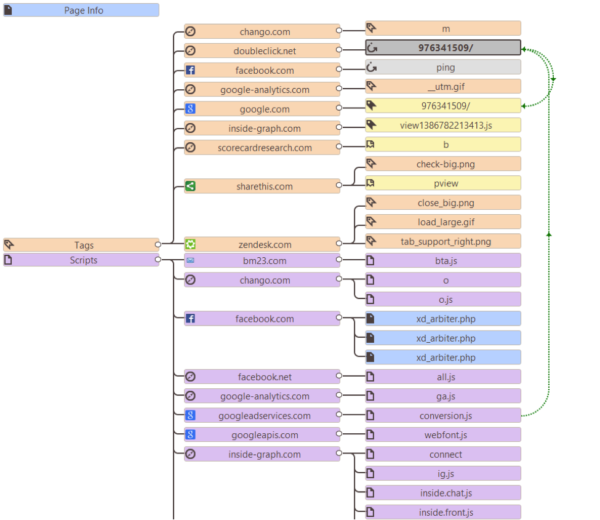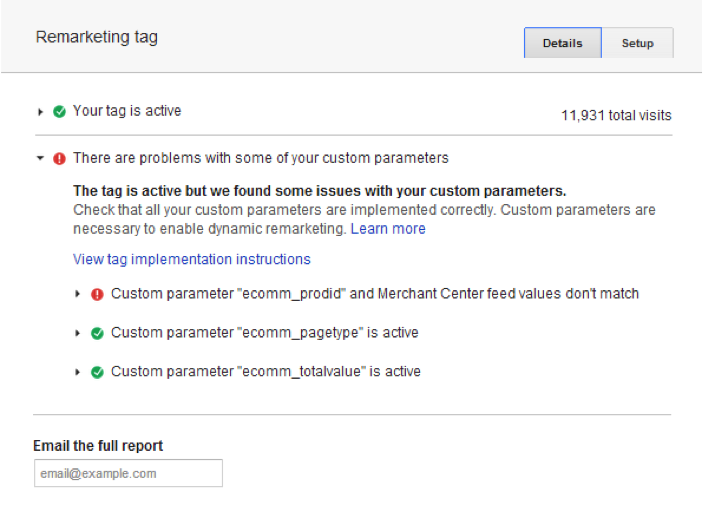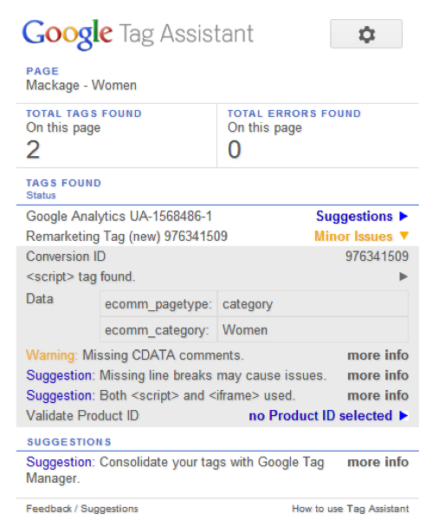Remarketing allows you to follow users who’ve previously visited your website as they browse the Web. We’re going to take look at a few ways to maximize your remarketing campaigns, as well as a few common mistakes to avoid.
There are 3 types of Remarketing to take into account in Google Adwords:
1. Remarketing for the Display Network: Shows ads to your site visitors as they surf the web.
2. Remarketing lists for search ads (RLSA): Show ads to your site visitors when they search for what you sell on Google. RLSA permits you to customize your keyword bids and ad text to these high value prospects.
3. Dynamic remarketing (for advertisers with a Google Merchant Center account): Shows beautiful ads to previous site visitors that have seen or bought your products in the past. You will be able to suggest other items they might like.
Remarketing is a powerful tool that will help you connect with previous site visitors to increase your chances of closing the deal and increase your average shopping cart amount. That is why it is crucial to avoid the following 10 mistakes:
1. Having unclear Business objectives
You should create a campaign for each one of your goals and have a clear naming convention. This will avoid any confusion when it comes to optimizing your campaigns later.
2.No tags on important pages on your website
Take advantage of the power of page tagging and track important pages that indicate your business KPIs, such as the thank you page after a purchase is made. I suggest that you list all the important URLs you wish to target. You can use the following tool to check if a tag was correctly inserted in your pages. When you run this extension, you can see below all the tags that are inserted in your pages and the scripts related to each.

3. Incorrect JavaScript code
If you tag with Google Analytics, make sure that you’ve added the proper Javascript code . Don’t forget to replace + ‘.google-analytics.com/ga.js’; by + ‘stats.g.doubleclick.net/dc.js’;
If you use Omniture Site catalyst rather than GA, you need to manually tag through Adwords. If you use Dynamic Remarketing, verify that you don’t have different product IDs in the tag versus the Google Merchant Center. To find out if your tag is working, you can click the View tag details option or download the Google tag Assistant extension.


4. Unclear and non-specific custom/segmented audiences
One of the biggest mistakes is to retarget all the visitors without segmenting them. For example, you should not retarget a client who just bought health care products with the same product and the same ad. The better you segment, the better your message will speak to a relevant target audience. For example, you could have a remarketing list for those visitors who abandoned their shopping cart before completing a transaction.
5. Standard cookie length across all campaigns
Based on factors such as your service specificity, the customer’s buying habits, and the level of implication, you will need to change the membership duration. For example, a person searching for a condo should not be retargeted for 30 days only since it could take up to 1 year to complete a sale on such a large purchase. Experiment with different cookie lengths. A prospect that visited your website 20 days ago should receive a different message (a different offer for instance) than a visitor who visited your website 50 days ago.
6. Using standardized ads for all custom audiences.
It is essential to tailor each creative to successfully appeal to your specific target. Have different offers and promotions that will speak to each audience. It’s all about testing.
7. Incorrect frequency caps.
You will either annoy your prospects or undermine your message’s potential. The frequency cap is based on classical conditioning (i.e. Pavlovian conditioning). The person’s level of implication for your product will affect how attentive they are to your message and whether or not they will seek rich information. Your prospects should be aware of your product or service the first time they view your ad; the second time should get their interest, and the third message should present the value and benefits in the customer’s eyes.
8. No Google Analytics Funnels to Track Conversion Processes
Depending on your goal you should track your visitor behavior through the different steps that transform your prospect into customer. This allows you to create and optimize your remarketing campaigns based on this funnel.
9. Have a bidding strategy that is the same across all audiences and sites
You should bid differently based on the site performance in terms of KPI and ROI. Don’t hesitate to exclude the web site that doesn’t covert as you wish. Depending on your custom audiences, you should have a different bidding strategy.
Let’s suppose you segmented your audiences by sex and you noticed you have a better conversion rate and cost per conversion for women. You should increase keywords bids for this specific custom audience and decrease your bids or budget for men.
10. Don’t test with different Landing pages
It is crucial to discover what content (products/services) speaks best to previous visitors. You have the advantage to cross sell. If you know a person bought a tablet, you should definitely show him a related product such as a tablet holder. Moreover, you can create custom landing pages made for paid search.
You want to increase your digital performance? Target the right audience: People Who Visited Your Website in the Past.
———-
About the Author
Mehdi Fehri is a PPC analyst at iProspect. He graduated with a Master’s degree in Strategy Marketing at ESG UQAM. He is fond of analytics and loves to talk numbers. Curiosity is his motto and this is what drives him to always look for industry innovations and best practices.



